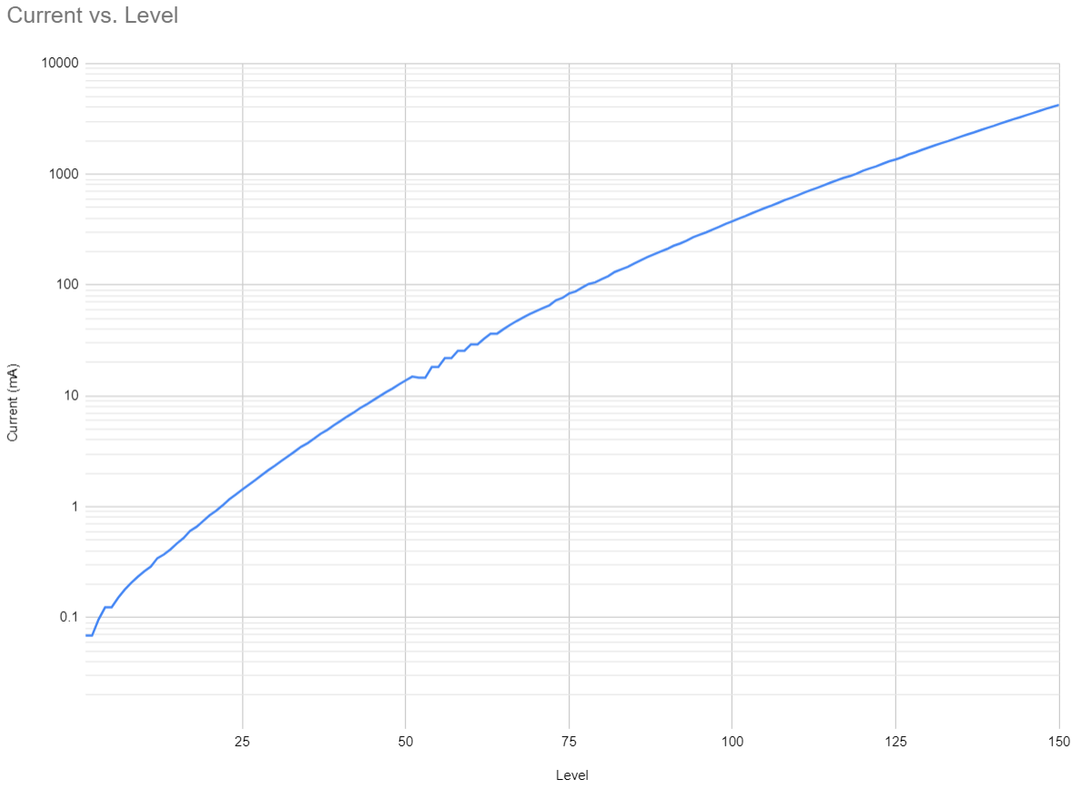It’s a 6A constant current HDR buck driver, like this one I made for the FWAA , but limited to 4.25A as I thought that was more appropriate for the LED and host.
The efficiency is the same as this one :
I call it a HDR driver because it switches between two different current sense resistors to achieve a large current range. The ramp looks like this :

(Shows a minimum of 70uA but I manually modified the calculated ramp afterwards to go down to 28 uA, can do 14 uA min).
The thermal regulation isn’t working very well (steps down too soon) at the moment though, I’m pretty sure that’s due to the MCU (thermal sensor) being on the same PCB as the LED so it heats faster than the body.
